
“A few minutes ago every tree was excited, bowing to the roaring storm, waving, swirling, tossing their branches in glorious enthusiasm like worship. But though, to the outer ear, these trees are now silent, their songs never cease.” ~ John Muir
A Timely Return
It’s been a month shy of 3 years since I last posted on this blog. I didn’t really mean to be absent this long but one thing led to another and time escaped faster than a kid chasing an ice cream truck! I’m inspired to write and photograph again and it only seemed fitting I restart this on Resurrection Day. It’s His creation I love to explore and it’s coming to life this month! Let’s see what we can find!
Put Nature Preserves on Your Adventure List
If you are tired of the crowds and the familiar trails of a state park or there isn’t one physically near by, search out nature preserves in your area. True, they typically are less acreage, have no facilities (i.e. bathrooms, nature centers, picnic tables) and are sometimes not well marked, but they also have no entrance fee, no crowds (often no one there but you!), and often encompass a unique feature. Quite often the land has been donated by families who wanted to preserve something special. A few may even come with historical significance. Such is the one we picked.
Playing A Role in American History
For a little backstory, in the mid- 1700’s, Chief Pontiac and his Odawa (or Ottawa) warriors used a well-travelled Native American trail which ran from Ft. Detroit to the French outpost, Ft. Vincennes, on the Wabash River. A foot trail that traversed over 400 miles. A portion of that trail was later used in 1811 by General William Henry Harrison to march his army north in hopes of stopping the expanding Indian confederecy under Shawnee leader, Tecumseh. General Harrison, originally intending to reach Prophetstown, the Indian encampment, via the Wabash River but was warned by local citizen & scout Zachariah Cicott that Shawnee warriors were positioned on cliffs above the Wabash to watch for Harrison’s troops. Harrison diverted his army from the Wabash River to march 5 miles inland on the old Indian trail and ultimately arrived at Prophetstown while Tecumseh was away. On November 7th, 1811 in the Battle of Tippecanoe, Harrison defeated The Prophet, Tecumseh’s brother. This victory, and the resulting halt of Indian attacks on frontier homesteaders, later propelled Harrison to the White House as our ninth President of the United States.
Crow’s Grove Then
Eventually, William Crow bought land on which this Indian trail crossed. In 1883, Weston Godspeed, writing a biography of William Crow and his land, penned “Traces of this old trail are yet to be seen.”
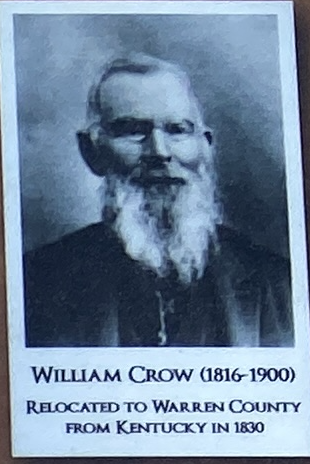
From William, the land passed down to his son, Walter, and to his son, Russell and finally to Russell’s daughters, Martha and Freda. In 2021, Martha and Freda donated the land to the non-profit organization, NICHES, who maintains it and opens it to the public.
Today
Crow’s Grove Nature Preserve not only has a great historical backstory, but it includes unusual physical features as well. The beautiful fern-covered sandstone cliffs and rare old growth pines are unlike anything else in this agricultural landscape. It is a tiny oasis of 150+ year-old pines and deep glacial ravines in the midst of flat corn fields and hardwood forests. Unexpected is the word for it.

The ancient pines loved the sandstone cliffs and the acidic soil found here.
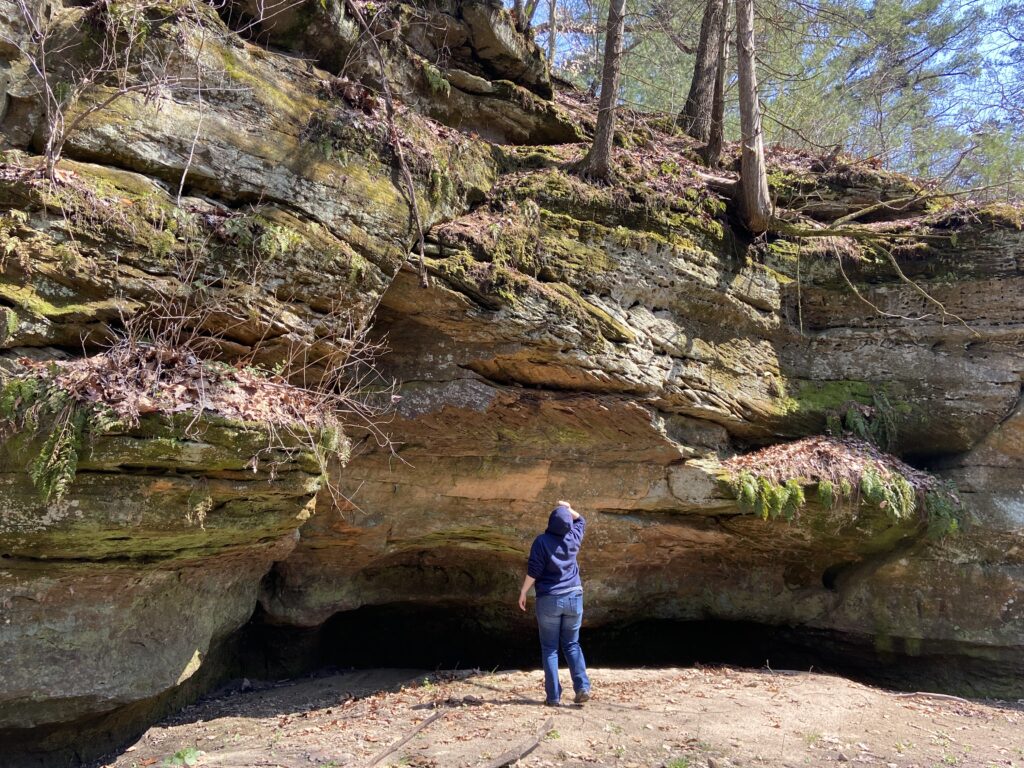
Below is one of the remnants of the old growth pines, 150+ years old Eastern White Pine. There are only a handful remaining in surrounding counties.
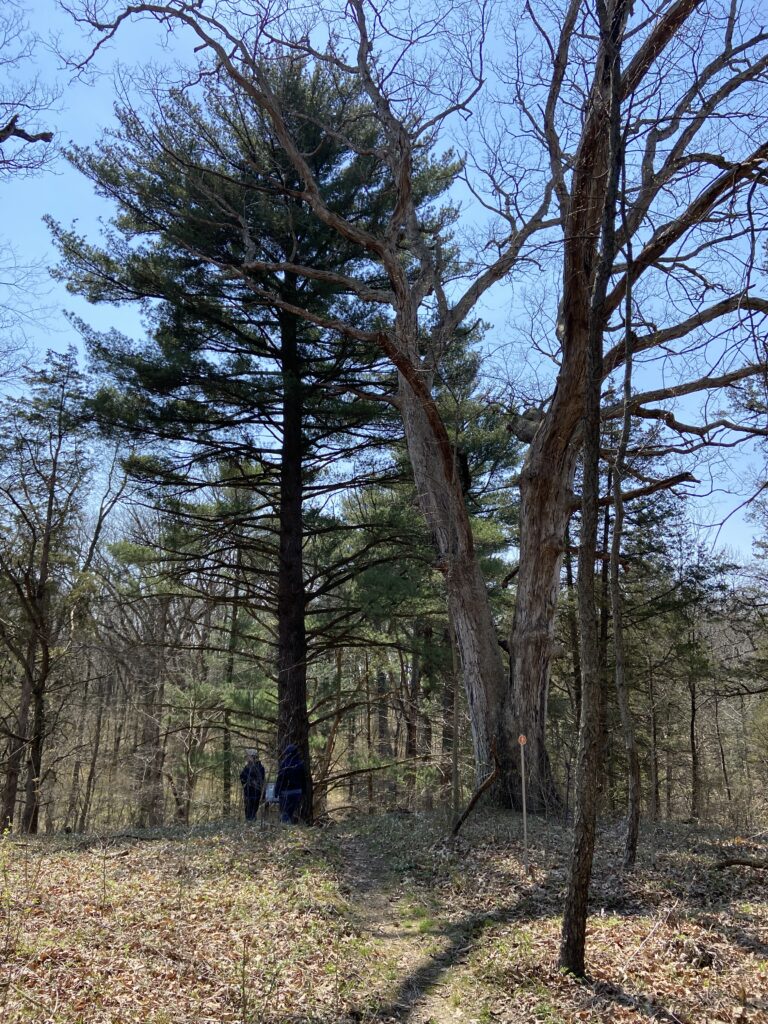
Oh, the stories it could tell.
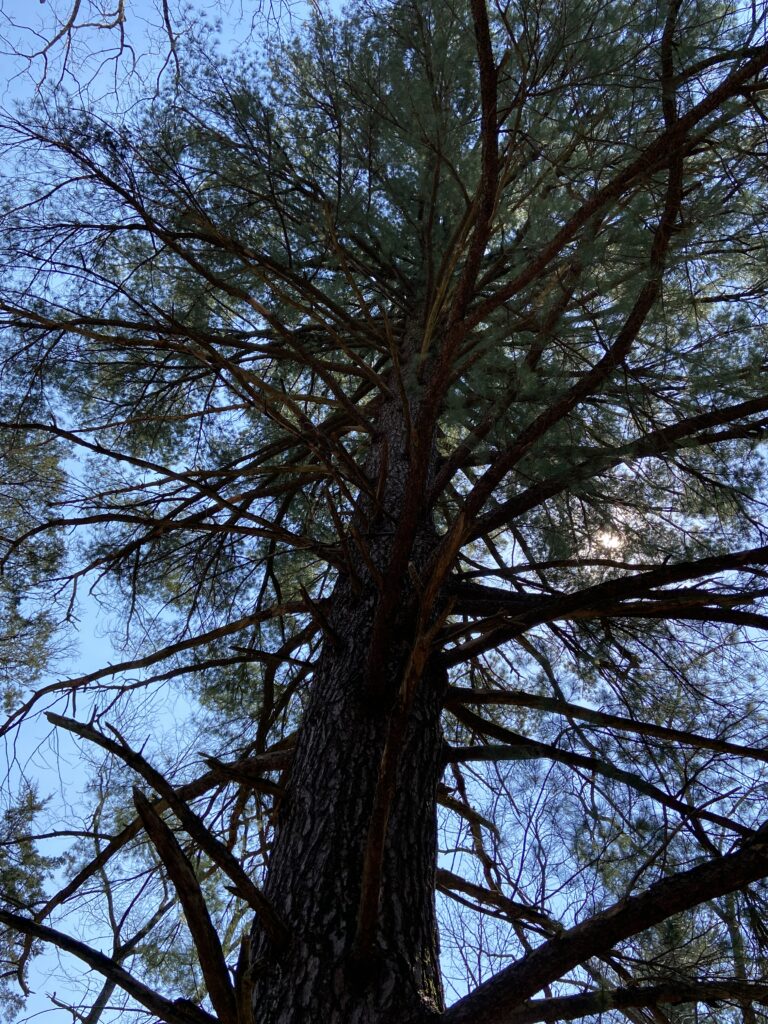
This truly was a giant among the trees. I was reminded of the cedars of Lebanon in Ezekiel 31:
“Beautiful branches overshadowing the forest; it towered on high, its top above the thick foliage. The waters nourished it, deep springs made it grow tall; their streams flowed all around its base and sent their channels to all the trees of the field. So it towered higher than all the trees of the field; its boughs increased and its branches grew long, spreading because of abundant waters. All the birds of the sky nested in its boughs, all the animals of the wild gave birth under its branches; all the great nations lived in its shade. It was majestic in beauty, with its spreading boughs, for its roots went down to abundant waters”
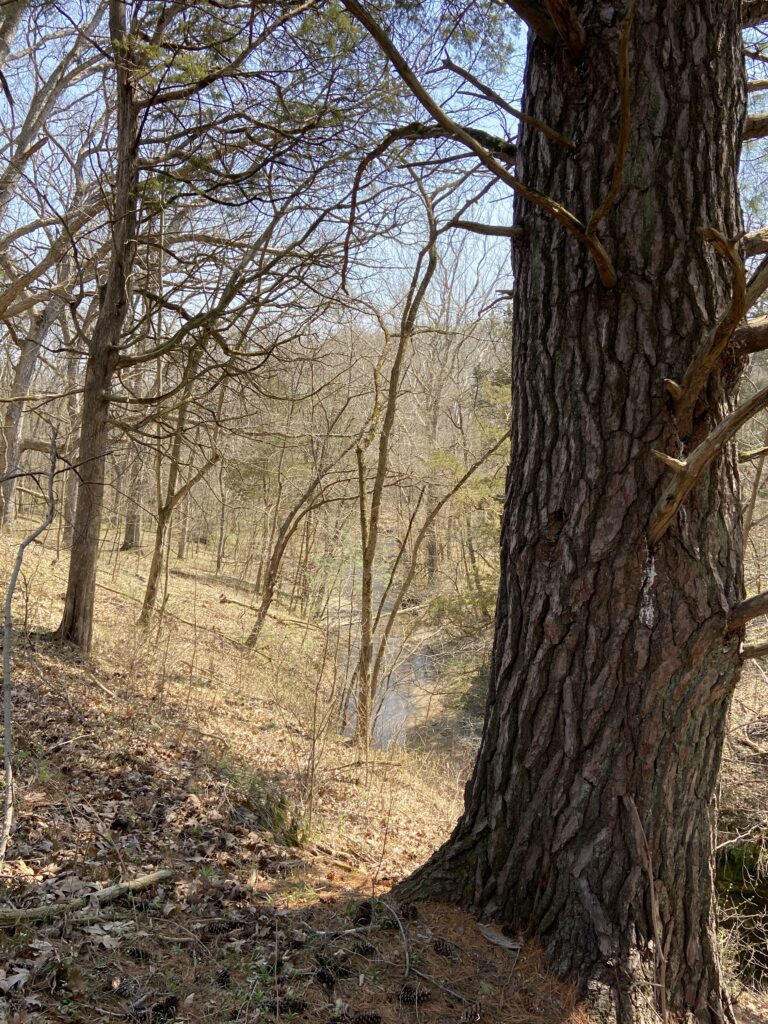
There was evidence that NICHES is trying to preserve new growth from these ancient pines for the generations yet to come.
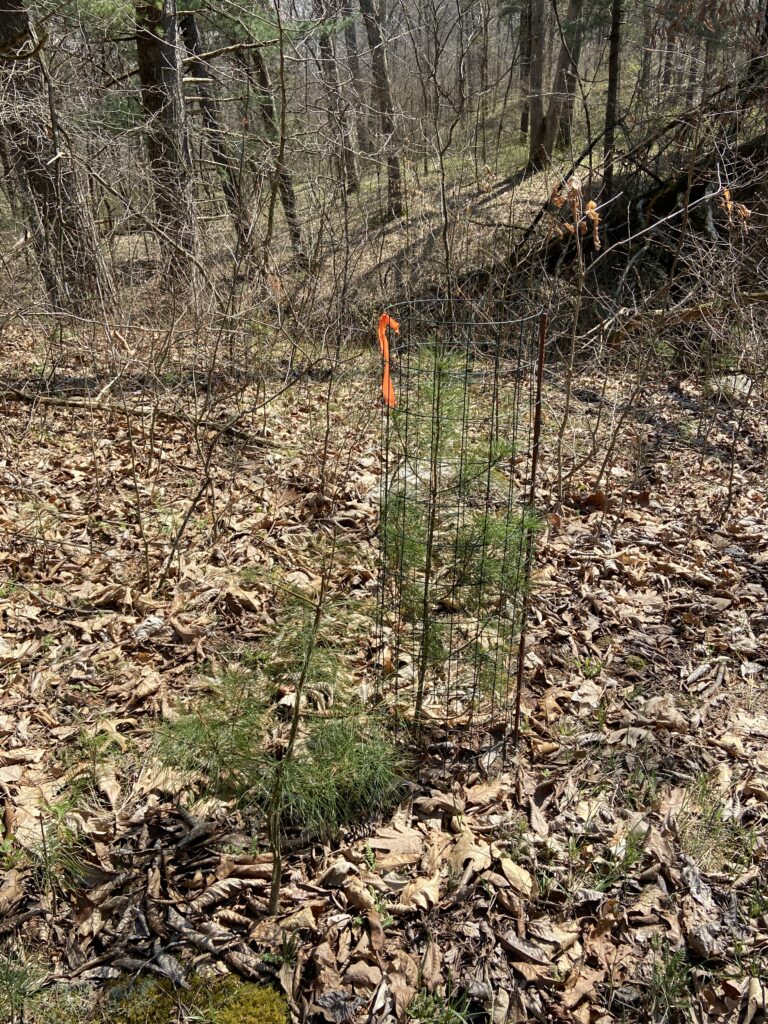
Looking down as well as up
Spring wildflowers were in abundance this first week of April. Below is Bloodroot (Sanguinaria canadensis). It is native to all the Eastern half of the U.S. and most of the Great Plain states. The bright reddish-orange sap near the soil surface gives it its name and was used to make a dye.
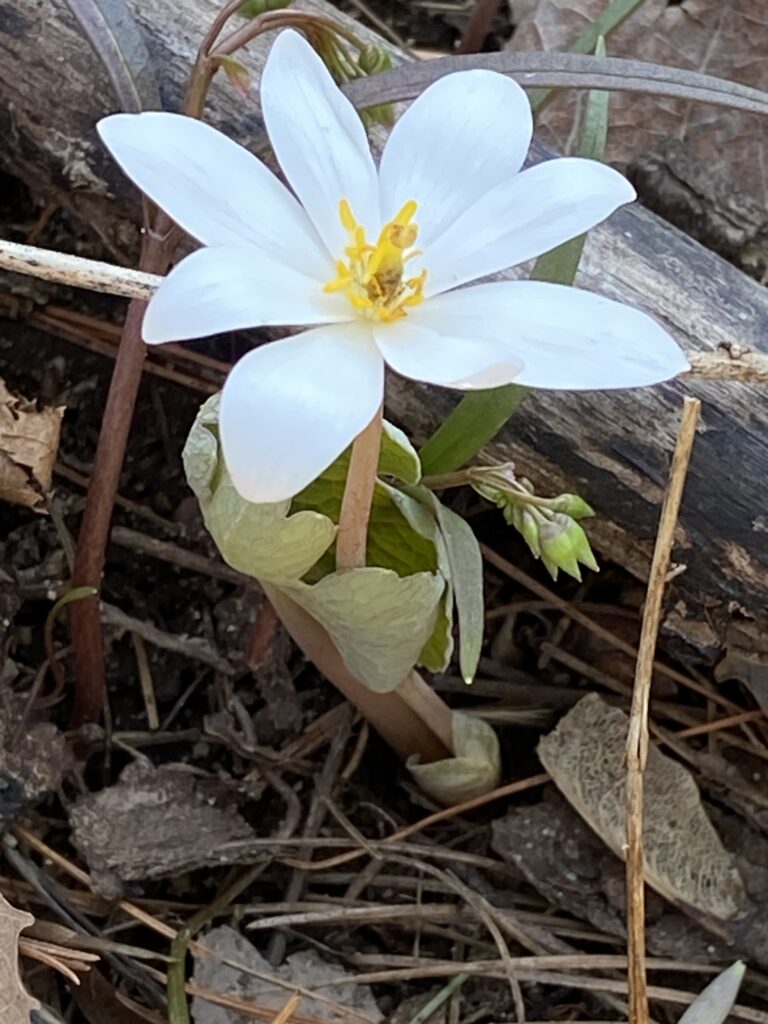
Below, Duchman’s Britches, a species of Bleeding Hearts (Dicentra cucullaria), is one of the first wildflowers I learned as a child. When my father explained that the petals looked like upside down pants of a Dutchman, I thought it was hilarious and could always pick it out after that.
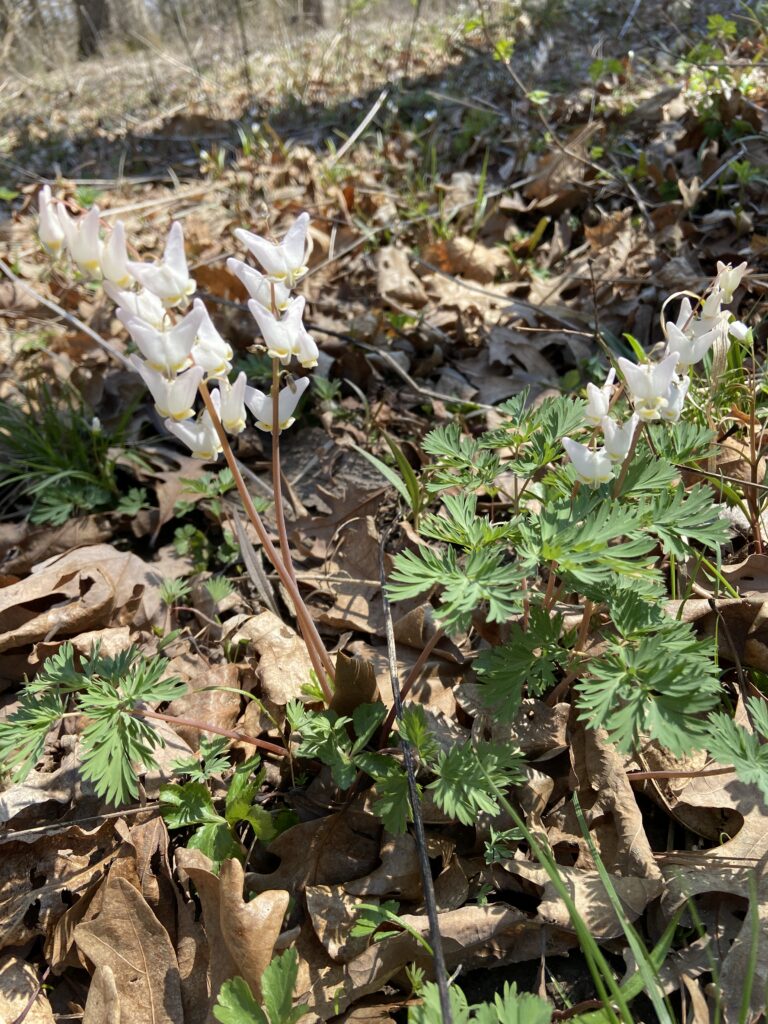
You probably can see why the flower below is sometimes called Mouse-ears or Liverleaf. The small leaves below the flower resemble a mouse’s ear or that of a liver. But most people nowadays refer to it as Round-lobed Hepatica.
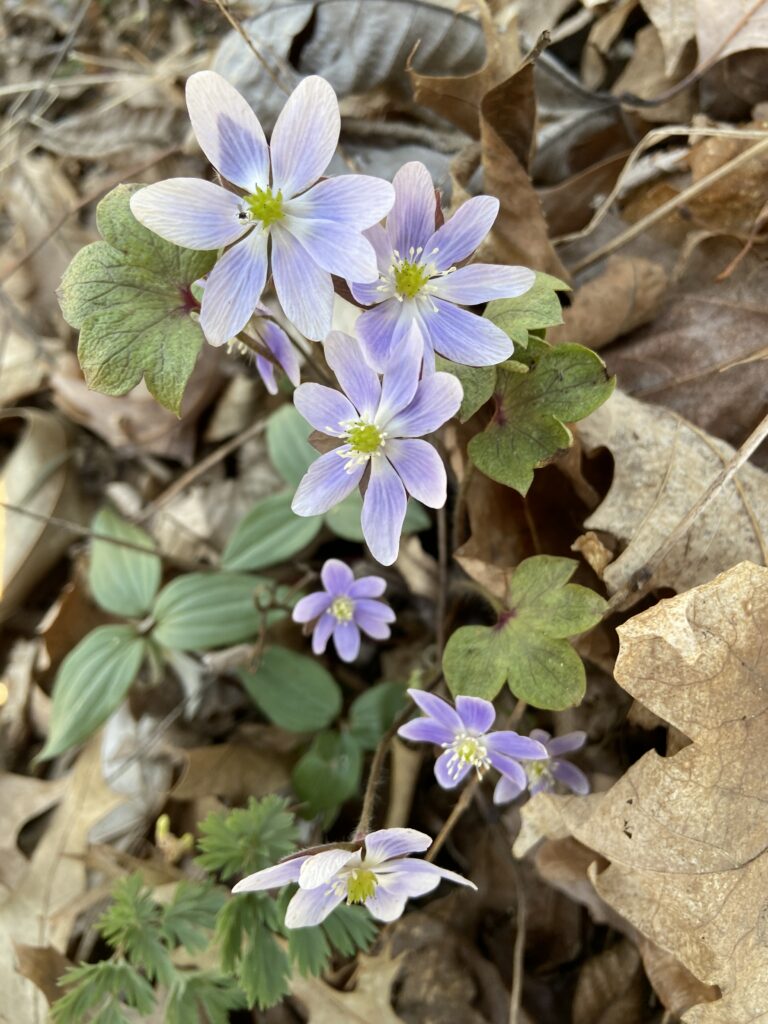
While this may look like my youngest daughter is attempting a hand stand, she is actually helping me shade the hepatica above for a photograph, using every part of her body to prevent sunspots in the photo. A+ for effort, my dear, and thanks for the assistance!
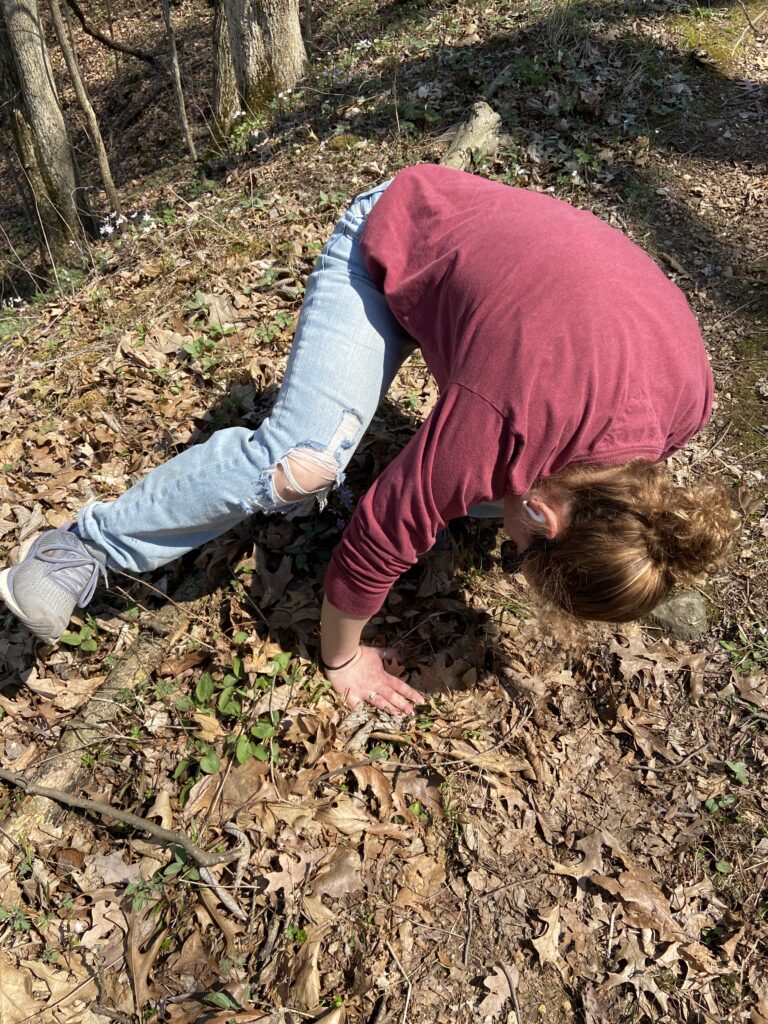
Spring beauties are always a favorite and prolific in my area. They herald in spring in the woodlands just as crocus and daffodils do in the garden.
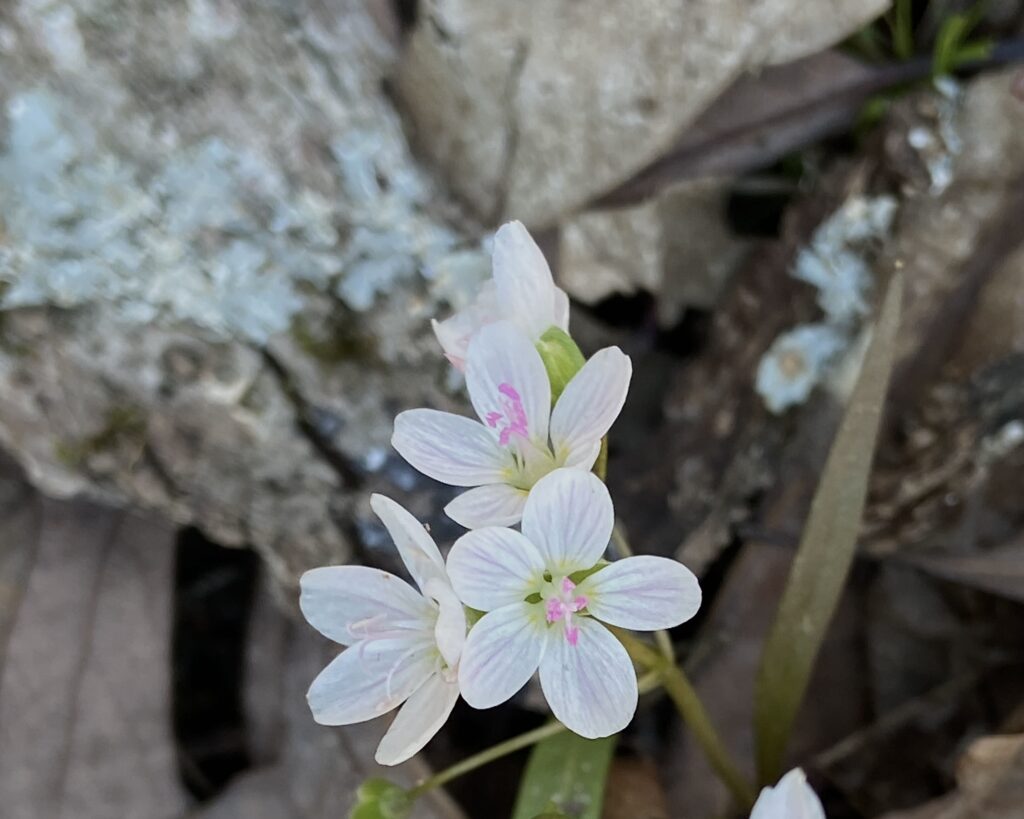
We truly enjoyed Crow’s Grove, considering it a diamond in the rough. It’s only 33 acres and starts out as a typical midwestern wood lot but unexpected surprises are just down the path. If you are local, I highly recommend you check it out. Directions and a more detailed history are on the NICHES website: nicheslandtrust.org.
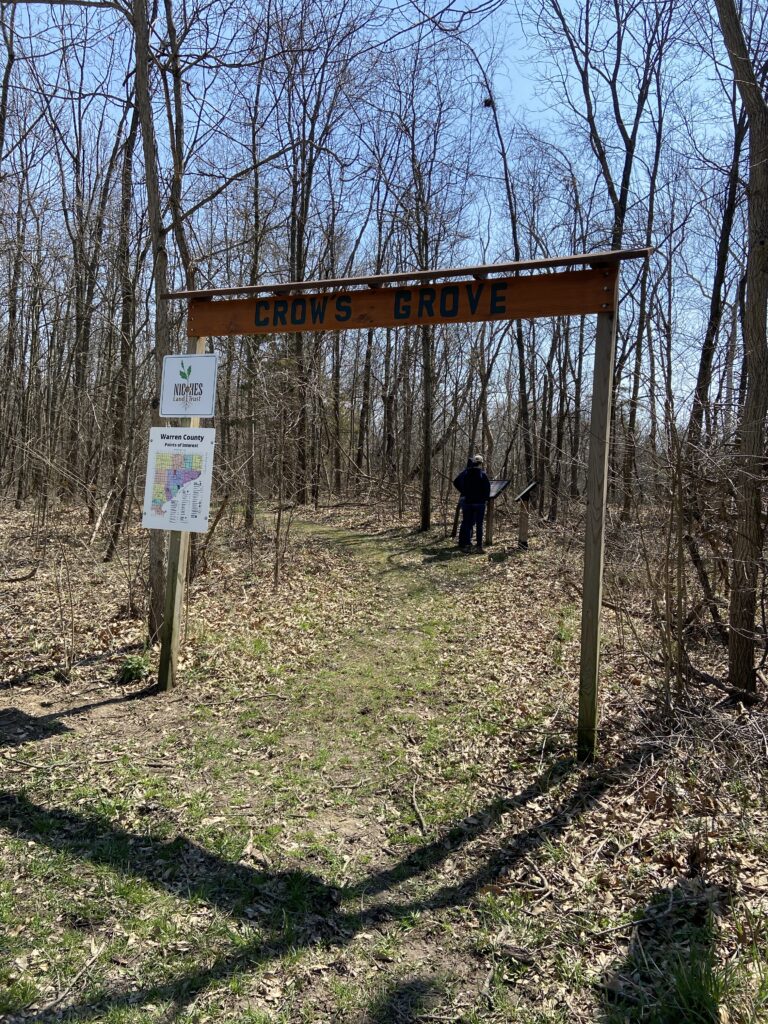
Thanks for coming along on this latest adventure. Leave a comment. I’d love to hear from you!
Till next time, catch y’all later,
Carolyn
I am so happy you are posting on your blog again! It was very missed. 🙂 I loved your pictures of all the spring flowers. I now will always be able to remember which one is Dutchman’s Britches because they really do look like upside-down pants! 🙂 I am excited to read your next post!
Your grandfather would be so happy for you to learn a little bit about something he loved so much!
Love your post Carolyn. Keep it up!
🥰
Spring is such a great reminder of the new life available in Christ!
I loved it, Carolyn! Outstanding photos & travelogue, & history! Please keep doing this—🥰
Please give me an elbow in the side if I don’t keep it up!
I truly appreciate you sharing your love of nature through your blog; I always feel closer to God when I’m out enjoying his creation, and you brought it close today! Glad you’re back to posting!
Somehow you and I should keep up our walks without our furry companions by our side. Miss them every day. Will they be waiting for us in heaven, ready to go on the next adventure?
Thank you Carolyn!! You have a beautiful way of writiting and I learn so much. Please do keep it up. You should publish these…there is such peace transmitted through your writings..
Thank you. So glad it communicates peace.
I felt as though I was walking with you and listening to your wealth of understanding nature. I so heard your voice. Thanks for taking me along!
I will look up nature preserves in my area soon.
❤️